Disclosure: This post contains affiliate links. If you use these links to buy something we may earn a commission. Thanks.
So, you finally bought that cheese you’ve been eying… Now, what are you going to do with it? Believe it or not, if you don’t store your cheese properly, it can cause negative affects, anywhere from decreased shelf life, to cross contaminated smells and flavors. Where do we go from here?
Diagnose your current situation
- If your refrigerator smells like death, you’re doing it wrong.
- If you mistake your Fontina for Parmigiano Reggiano, you’re doing it wrong.
- If you notice strange colors or fur, you’re doing it wrong.
- If your leftovers from last night smell like the Stilton you bought 3 weeks ago, you’re doing it wrong.
- If you buy cheese and leave it in your fridge in its original wrapping for 2 weeks and then decide to eat it, you’re doing it wrong; and, have just committed cheese murder!
Storing cheese will make so much more sense after you understand that the main goal is to prevent as much water loss as possible while allowing the cheese to breathe. I don’t know about you, but I like breathing; and, so does cheese! In fact most people in the cheese industry believe wholeheartedly that cheese is a living thing. Much like houseplants die from lack of attention, so does cheese. Losing moisture in houseplants will make them sag or droop, but in cheese, it alters the texture of the cheese making it hard. In both cases, plants and cheese will result in untimely death if they lose all of their moisture (excluding some hard cheeses). Now that we know that every cheese life is precious, let’s learn how we can extend them as long as possible!
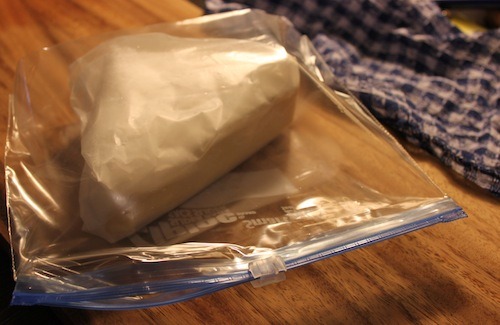
Cheese storing method
- If the cheese is wrapped in plastic wrap, remove the packaging immediately and wrap in parchment or wax paper. Do not wrap in plastic wrap. plastic wrap suffocates cheese.
- Write date and place inside a plastic wrap loosely, vented plastic container, or in an unsealed resealable bag.
- If you're going to store your cheese in the fridge (you may not have to) store in the vegetable drawer—not only because it is the warmest area of your fridge, but because it also stays at a constant temperature.
- Change the wrapping every couple of days.
Interested in a detailed demonstration on wrapping cheese? Serious Eats contributor Jake Lahne has offered great pictures and descriptions to show you how to wrap and store cheese.
There’s more to this…
- The harder the cheese, the longer it can be stored.
- Fresh cheeses don’t last very long; that being said, keep it cold. They also usually come in a resealable container which you should keep and use to store the cheese during its lifetime.
- For fresh cheeses sold in liquid like Feta, make sure to change the water every couple days.
- Many cheeses can be stored for up to 3 months in the freezer, but freezing will affect the taste of the cheese.
- If you plan on eating frozen cheese, best to thaw it in the refrigerator.
- Be aware that storing cheese with strong smells and flavors near those with mild ones is dangerous and may adversely affect the flavor of either or both cheeses.
- Cheese should, most times, be served at room temperature. When cheese is left at room temperature it will sweat moisture; so, before putting the cheese back into the fridge, make sure to wipe off the moisture to prevent damage to the cheese.
- Pay attention to the “cut and packaged” dates on the the cheese. You want to make sure that you are buying cheese that have today’s date on them to ensure that they are as fresh as possible.
Consider: you may be buying too much

Our number one recommendation is to buy smaller pieces of cheese more often, because a reputable cheesemonger is better equipped to store cheese.
Murray’s Cheese
Realistically, you will not be able to store cheese at home for more than a couple weeks. That being said, only buy as much as you think you can eat. That is to say, if you buy a big wheel and eat only a small portion of it, no matter how well you store the cheese, you will end up throwing out the part you didn’t finish after a few weeks.
Do not forget about wrapped cheese in the back of your refrigerator. Regularly remove stored cheese from the refrigerator, unwrap and inspect it.
Formaticum
Remember that the point is not to store the cheese for as long as possible, it is to enjoy the cheese while it is fresh! You should be definitely more focused on eating the cheese, not storing it; it’s not a competition! The one with the most cheese in his fridge at the end of the day does not get a prize.
Is that mold on my cheese?
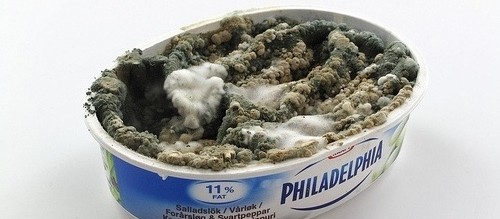
Another concern in storing cheese—besides losing moisture and maintaining respiration—is prevention the growth of new mold. Of course I say new mold because some cheeses, particularly the blues, are usually covered in mold and the distinction needs to be made clear: As long as it doesn’t get much more visibly moldier, then it should be fine.
If the cheese does start to grow new mold, don’t rush to throw it out. It should still be safe to eat as long as you remove the mold—making sure to remove at least half an inch around the affected area.
I’ve never done this, but according to one WikiHow article, you can prevent mold from damaging the cheese by rubbing edible oil, like pure olive oil, on the areas which you have cut into the cheese; if mold should form it will eat oil first and not the cheese. when you’re ready to eat just wash off the oil and dry.
There is a misconception about mold growth on cheese among many people. As long as new mold growth is removed as it appears, the mold will not harm the cheese.
Kathryn Hatter, eHow.com
Are there any special tools?
While you can successfully store cheese for weeks using supplies that you may already have in your pantry (e.g. wax paper and resealable bags), there are companies that sell tools, which claim to be much more efficient media for storage.
Specialty cheese paper
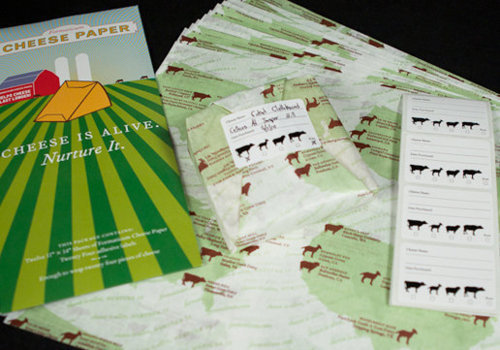
Formaticum offers specialty paper which has a coated paper exterior and a porous plastic interior which claims to maintain the proper level of humidity while allowing the cheese to breathe and preventing the build up of excess moisture on the cheese.
Bee's wax reusable food wraps
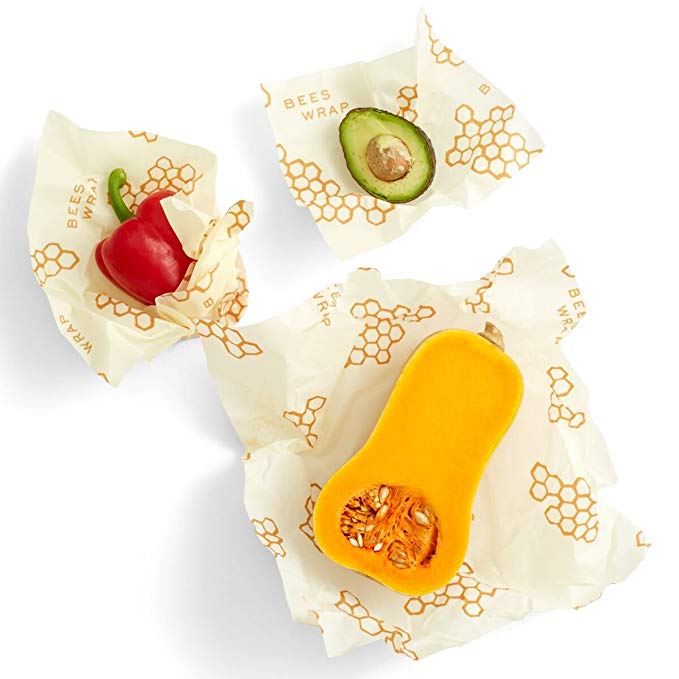
My current favorite, is beeswax reusable food wrappers. They're really great alternatives to single use plastic, and are breathable and hygienic for every day cheese storage. They're also non-toxic and biodegradable.
Cheese domes
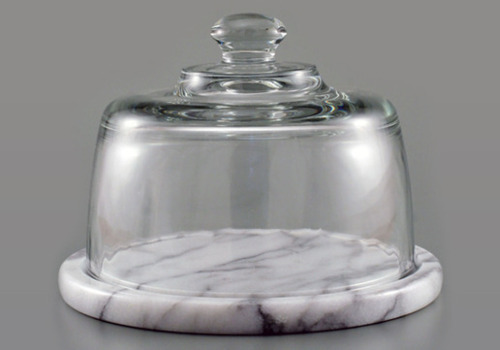
Cheese domes are great for storing white mold or soft ripened cheeses and washed rind cheeses. The function of the cheese dome is that it creates the perfect climate for the cheese it is storing. Another advantage of the cheese dome is that you don’t need to wrap the cheese in paper, and it is reusable—just give it a good wash and you’re ready to store the next cheese.
All cheeses are not created equally
As there are many different kinds of cheeses, there are just as many different ways to store them; however, you will want to pay attention to the specific needs of each cheese. If you buy a cheese that you are unsure how to store, your local cheesemonger will be happy to teach you the best way to keep it fresh.